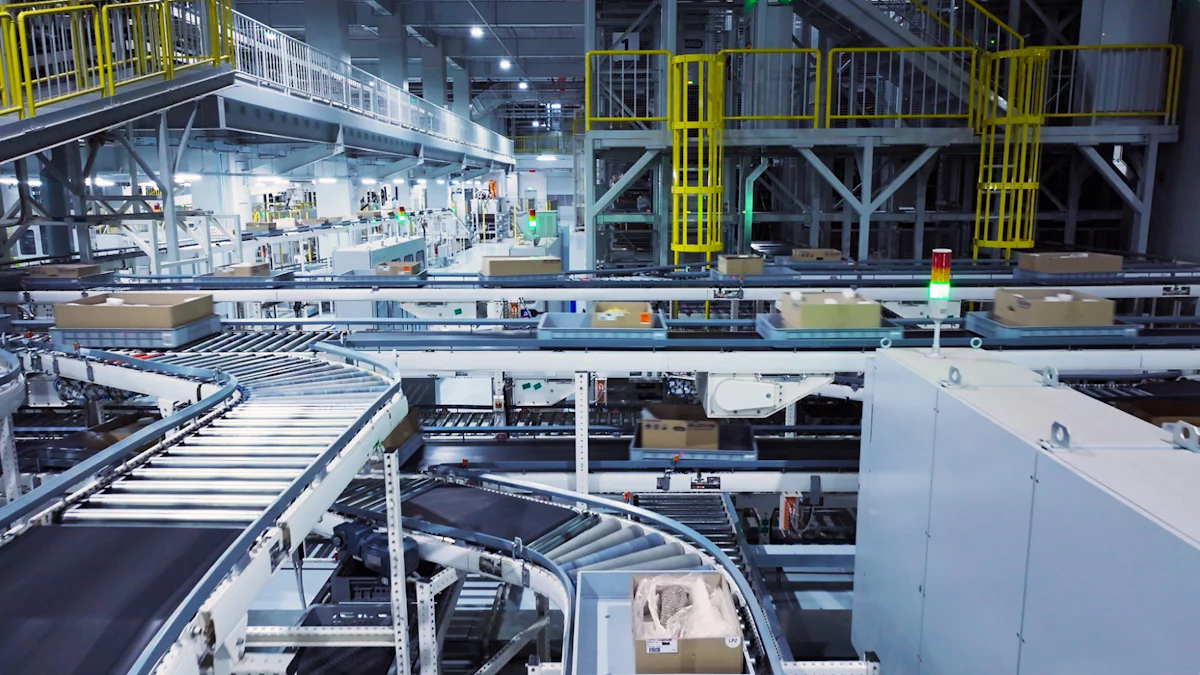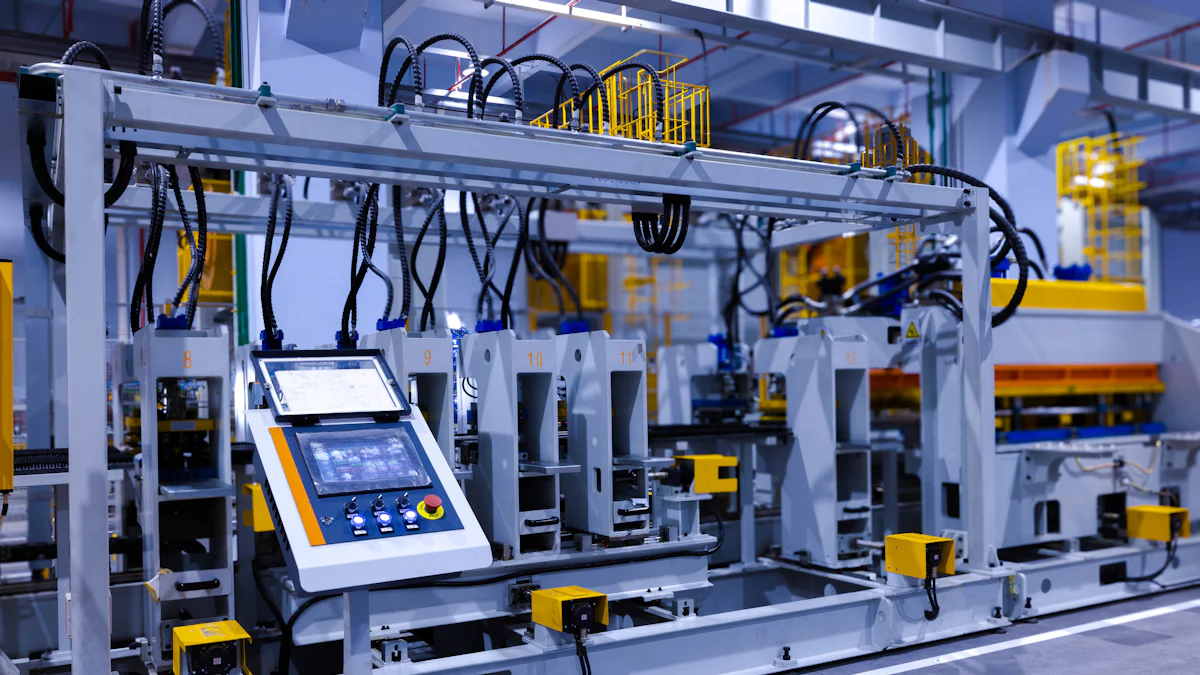
News

Using a VFD helps you control motors better. This starting method slowly increases voltage and frequency for smooth running. It stops sudden starts and stops, lowering mechanical stress. Bearings and gears last longer because there’s less wear. Motors can last 30% longer and need 40% less fixing, as shown below:
VFDs limit starting current to 150% of full load current. This starting method lowers heat stress and keeps motors working well.
Key Takeaways
VFDs help motors by slowly raising voltage and frequency. This lowers wear and tear and makes motors last 20-30% longer.
Using VFDs can lower repair costs by up to 40%. They also save energy, making them a smart choice for businesses.
VFDs control speed accurately, making machines like conveyors and elevators run smoothly. This improves how well they work overall.
How VFD Starting Methods Work
 Image Source: unsplash
Image Source: unsplash
Gradual Voltage and Frequency Ramping
VFDs slowly increase voltage and frequency for smooth motor starts. This method helps the motor speed up without sudden jerks. It reduces stress on motor parts and connected machines. For instance, it protects gears and bearings, making them last longer.
This method also allows for smooth slowing down. When stopping, the motor slows gently to avoid sudden stops. This is helpful for machines like elevators or conveyor belts. You can even set how fast or slow the motor starts and stops to fit your needs.
Reducing Starting Current for Longevity
One big benefit of VFDs is lowering starting current. Old methods cause a power surge up to 8 times normal current. VFDs keep it at only 150% of full load current. This reduces heat and stress, which often damage motors.
By protecting parts like bearings and windings, motors last longer. They can run 20-30% more years without breaking. Since half of motor failures come from bearing problems, this is very important. It also cuts repair costs and improves system performance.
Precise Speed Control for Smooth Operation
VFDs let you control motor speed very accurately. You can adjust speed within 0.1% of the base speed. This keeps machines running smoothly in tasks like cutting or rolling.
Accurate speed control also manages torque better, reducing motor wear. Torque stays within 1% of full-scale torque, improving motor life. This precision saves energy and lowers costs by up to 50%.
Comparing VFDs with Traditional Methods
VFDs vs. Reduced Voltage Starters
VFDs and reduced voltage starters work differently. Reduced voltage starters lower the inrush current during startup. But they don’t control the motor after it reaches full speed. VFDs, however, adjust voltage and frequency all the time. This allows better control of speed and torque. It also saves energy and reduces stress on motor parts.
Here’s a simple comparison:
VFDs help motors last longer by protecting parts like bearings. They are great for machines needing speed changes.
VFDs vs. Soft Starters
Soft starters and VFDs both reduce stress when starting motors. Soft starters slowly increase voltage to limit inrush current. But they stop controlling once the motor is at full speed. VFDs, however, keep controlling speed and torque during operation. This makes VFDs more useful.
VFDs are best for machines like conveyors or HVAC systems. They also have extra features like braking and multi-motor control, which soft starters don’t have.
Why VFDs Are Better for Motor Control
VFDs are better because they save energy and work efficiently. They adjust speed and torque based on the motor’s needs. This lowers costs and reduces stress on the motor. VFDs also make motors last longer by starting them smoothly. They are perfect for tasks like pumping or ventilation.
Other advantages include small designs, remote monitoring, and smart energy-saving systems. These features make VFDs the top choice for modern motor control in industries needing precision and reliability.
Real-World Uses of VFD Starting Methods
Industries That Use VFDs
VFDs are used in many industries needing motor control. In factories, they help conveyor belts move at the right speed. Delivery companies use them to make machines work together better. Construction sites and ports use VFDs in cranes to avoid damage. Plastic factories use them in machines for steady motor work.
Textile and paper factories use VFDs to keep tension steady. Chemical and drug companies use them in centrifuges for exact speeds. Wind turbines and electric cars also use VFDs to save energy. These examples show how VFDs improve motor control in many fields.
Examples of Better Motor Work
VFDs make motors work better in many ways. For example:
Factory conveyor belts move smoothly with speed control.
Elevators and escalators start and stop safely.
Metalworking machines cut more accurately with steady torque.
Centrifuges in labs spin at the right speed.
Wind turbines adjust speed to match wind for more power.
These uses show how VFDs make motors more reliable and precise.
Energy Savings and Other Benefits
VFDs save a lot of energy in motor work. Water plants use 50% less energy with VFDs. HVAC systems save 35% on energy, cutting costs. Some places save $5,374 a year, reducing energy use by 45%. By controlling motor speed, VFDs waste less energy. This also helps the environment by lowering carbon pollution.
VFDs change how motors are controlled. They lower starting current, reducing heat and stress on parts. This helps motors last 30% longer and need 40% fewer repairs. VFDs also control speed accurately, making motors run smoothly and saving energy.
Today’s VFDs adjust voltage and frequency based on motor needs. This saves energy and avoids waste.
Unlike old methods, VFDs give better control, save energy, and are more reliable. They are important for industries wanting better performance and lower costs. Using VFDs makes motors work well and last longer.
FAQ
Why is using a VFD helpful for motor control?
A VFD lets you control motor speed exactly as needed. It lowers the starting current and uses less energy. It also helps motors last longer by reducing wear and tear.
Do VFDs work with all motor types?
VFDs are best for AC motors, like induction motors. Always check if your motor works with a VFD before setting it up.
How do VFDs save energy in factories?
VFDs change motor speed to match what the job needs. This stops extra energy use, especially in machines like fans and pumps.
Previous:
Next:
Please give us a message